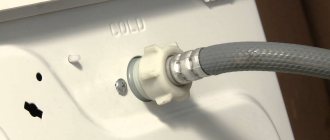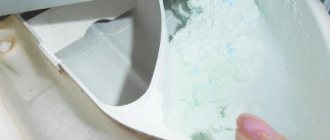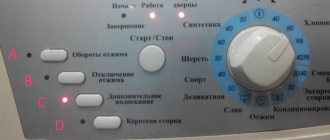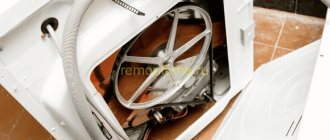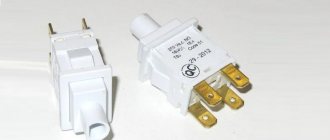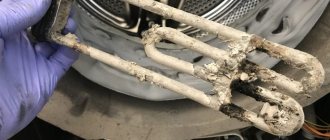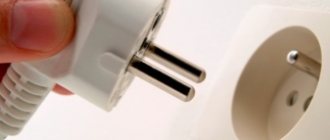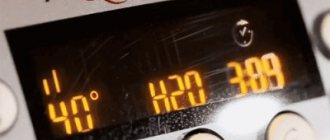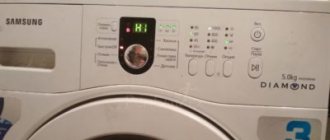The device for washing clothes reported that the work process was completed, everything went as usual, but the clean laundry does not smell fresh, but emits the smell of detergent. Pulling out the dispenser compartment reveals unused rinse aid in the tray. It seems there is no reason to worry, but there are still certain difficulties, because even minimal deviations from the process become significant preconditions for breakdowns. We will have to figure out why the washing machine does not remove the air conditioner from the compartment.
Possible causes of malfunction
It is not recommended to be negligent in such situations. Initially, the simplest problem that does not interfere with the operation of the washing machine tells you that a serious failure has occurred in the automation, which after some time will result in big troubles. In this case, experts recommend checking all possible sources of the problem, from mild to the most complex faults. First, let's look at the easiest reasons that can be eliminated on your own:
- the pressure of the incoming water has weakened. Often the air conditioner does not leave the machine tray because the water is supplied at low pressure. In this case, at the initial stage of washing, it takes a long time to fill with water, and strange rustling noises are heard. Perhaps the supply valve is only half open, or the pressure in the central water supply system has weakened;
- error when selecting tray compartment. The air conditioner is poured into a special compartment that has the appropriate mark. A common mistake made is to pour the liquid product into the powder tray, which is activated during the prewash. You need to find the instructions for the washing machine and clarify the tray designations;
- The dispenser is clogged. The remaining conditioner could dry out or stick together, partially or completely blocking the flush channel. The problem can be solved - cleaning is carried out regularly. The procedure produces results when performed once every couple of months;
- a product is used, the amount of which exceeds the norm. Modern washing machines can independently determine the amount of conditioner required, and the product remaining in the tray will indicate that it is excess;
- poor quality air conditioner. It is necessary not only to choose a good product, but also to check its expiration date. The composition may not only be dangerous, but also have a viscous consistency. The thick and sticky product poured into the tray is difficult to absorb with water.
What to do if the pressure in the water supply system is normal, the product is poured in the required quantity and meets the required quality, the tray has just been cleaned, but there is still conditioner in it? We'll have to continue searching for the problem. It is possible that the water intake valve has failed.
What to check first if there is air conditioner left in the washing machine?
- Does water flow into the machine at normal pressure? Perhaps the water pressure is too weak and “not enough” to pick up the air conditioner. Usually, at the beginning of the cycle, the washing machine “rusts” for a very long time, taking in water. In this case, first check the water supply valve - it may not be fully open. If everything is normal with the shut-off valves, the problem may be in the pressure in the water supply. In this case, the pressure will be weak in all taps. To solve the problem, contact the specialists of the utility services that service your home.
- Did you fill the air conditioner into the correct dispenser compartment? Perhaps you accidentally mixed up the compartment and poured conditioner into the powder compartment during pre-wash? Please check the instructions.
- Is the air conditioner flush channel into the tank clogged in the dispenser? Often, air conditioner residues stick to the walls of the dispenser channel and dampen the pressure of water that washes away the rinse aid. To avoid this kind of trouble, periodically remove the dispenser tray and rinse it under warm water, paying special attention to the detergent flush channels.
- Have you gone too far with the amount of rinse aid? More is not always better. Particularly smart machines will simply leave excess conditioner in the dispenser, but what is more likely is that the excess conditioner will begin to dry out and “clog” the flush channel. So read the instructions for the product and use measuring caps.
- Are you using a quality fabric softener? Is it expired? The main danger of an old air conditioner that has expired is that it becomes thick and “sticky.” Hardening on the walls, it clogs the flush channel. However, “fresh” but low-quality rinses have the same features. So choose a reasonable price-quality ratio and be sure to pay attention to the expiration date of the air conditioner.
If, during an independent inspection, you did not find any problems - the water pressure is normal, the detergent tray was thoroughly rinsed before washing, and the quality of the fabric softener was checked several times, then there is some kind of problem in the washing machine itself.
Clarifying problem signs
If the above contingencies are completely excluded, there are three steps left to take:
- clean the inlet filter;
- repair this element;
- replace with a working analogue.
To choose the appropriate option, you should clarify certain characteristics:
- The washing powder and conditioner are not completely washed out with water, the working cycle is activated, and the machine takes a long time to fill the tank with water. The cause must be sought in a clogged inlet filter;
- the air conditioner remains untouched, the washing machine is unable to absorb the required amount of water into the system, sends the corresponding error code to the panel screen and does not start the washing process. The reason lies in severe blockage of the valve or its complete failure;
- The detergent remains unused, water is quickly poured into the machine, and the washing device begins to work. The difficulty lies in the fact that the mechanism that directs the flow of water into the tray has failed. The air conditioner is washed out using a special nozzle that rotates through a cable and spring. A failed mechanism will direct a stream of water to another tray.
Each listed malfunction requires immediate action.
The washing machine does not wash out the conditioner - possible malfunctions
The problem with poor flushing of the rinse aid is due to insufficient pressure due to a broken inlet valve or clogged powder receiver nozzles.
Malfunction of the water supply valve - from RUB 1,400*
The machine does not flush out the rinse aid when the intake valve, which opens when voltage is applied to it, has failed. This is how water is poured into the washing machine. Depending on the design of the valve and the type of malfunction, the washing machine behaves differently. There are four types of breakdowns.
- The solenoid valve coil has burnt out. Because of this, when voltage is applied to the valve, the membrane does not open and water does not flow into the machine. Usually the breakdown appears at the beginning of the wash, and the machine not only does not wash out the conditioner, but also does not collect water. Sometimes the unit fails while the machine is filling the rinse tank. The product remains in the compartment because the SMA stops.
- The valve diaphragm opens partially. If the diaphragm mechanism becomes stuck, the valve does not open completely. Water flows slowly and for a long time. The pressure is too weak, so the conditioner is poorly washed out of the compartment.
- In a two-section valve divided into “pre-wash and main wash,” the section responsible for collecting water in the pre-wash has failed. With this design, the air conditioner is flushed only with two sections operating simultaneously. If the pre-wash water supply section fails, then when the rinse supply is set, a stream of water enters the powder compartment, and the rinse aid in the tray remains untouched.
- In a two-section valve with sections divided into “wash and rinse”, the section responsible for collecting water for rinsing has failed. In this case, the water for the rinse cycle does not enter the machine, and the washing machine not only stops taking up the rinse aid, but also does not rinse the laundry.
From the experience of the masters! If your washing machine has stopped rinsing, we recommend reading the article “Why the washing machine does not rinse clothes.”
HOW TO FIX
In all cases, the water supply valve must be replaced.
How to fix the situation
In most cases, the problem is due to a clogged intake valve filter. To eliminate it, you must clean the element. The algorithm of actions does not cause any difficulties and is performed in the following order:
- the washing machine is disconnected from the water supply and electrical network;
- the water intake hose is disconnected from its body part;
- a filter mesh made of plastic material is removed;
- the filter element is washed under water pressure. If there is a lot of scale, you can soak it in citric acid (a spoonful in a glass of warm water).
When the filter mesh becomes clean, return it to its original place and screw on the filler sleeve. After completing all the steps, make sure that there are no drops of water at the joints, connect the machine to the water pipe and electricity, set any mode and check whether water flows into the air conditioner tray.
How to fix the problem
In most cases, the cause of this malfunction is a clogged filter in the water supply. You can fix the problem yourself. To do this, you need to perform the following steps.
- Disconnect the machine from the power supply and turn off the water.
- Unscrew the supply hose from the device.
- Remove the plastic filter from the recess.
- Rinse the element with water and carefully clean it mechanically.
- Repeat the same manipulations with the filter at the other end of the hose.
- Insert clean filters into place, run water, check connections for leaks.
- Connect electricity.
- Put the machine into operation.
Changing the valve
This is necessary if the element has completely lost its ability to work. The event is troublesome, but quite doable on your own. First, you should purchase a new analogue, specifying the serial number of the washing unit, after which you can proceed to replacement. Actions are performed in the following sequence:
- the machine is disconnected from the power supply, the water supply is cut off;
- Unscrew the fastening screws of the top cover and remove it to find the valve. If your machine has a vertical loading option, you will have to additionally remove the side panel located closer to the connection point of the water intake hose;
- The wiring is disconnected from the part and the pipe is disconnected. For this purpose, the fastening clamps are loosened. If the rings are disposable. They are simply cut off and replaced with new ones during installation;
- the valve is disconnected from the body part. To do this, release the latch or unscrew the screws;
- Carefully remove the part by turning it slightly in the direction of the clock hand.
If the need arises, you can check the condition of the nozzle cable and the water supply device itself, carry out repair work, or immediately install a new analogue. In each case, all installation work is carried out in the reverse order - the valve is inserted into the groove with a slight twist, the pipe and wiring are connected, the clamps are tightened, and the panel is installed in its place. All that remains is to check the operation of the washing machine in any mode.
Washing machine repair by a specialist
Please note that repairing a washing machine when it does not pick up the air conditioner requires certain qualifications from the repairman and the use of special tools. In some situations, original spare parts will be required to replace parts that have lost their functionality.
A washing machine is not a cheap thing and, especially, not a field for training your skills in repairing household appliances. The best option is to invite a professional washing machine repairman who will diagnose the problem, identify the cause of the failure and quickly fix it. And most importantly, you will receive a guarantee that your assistant will work flawlessly.
How to remove the filter from an Indesit washing machine?
To unscrew the drain (water) filter in the Indesit washing machine, you need to firmly grasp its recess.
- Turn the thread and turn it counterclockwise.
- When you reach the stop, pull out the plug.
Interesting materials:
How long does it take to do 2 personal income taxes? How long does it take to obtain a Czech visa? How long does it take to obtain a Schengen visa? How long does it take to get a visa to Germany? How long does it take to get a visa to Greece? How long does it take to get a passport? How long can repairs take? How to make your own kombucha at home? How and where to make a work book? How and when to graft fruit trees?
Cleaning the intake valve filter
The most common reason why rinse aid is not washed out is a clogged valve filter. To restore balance, you need to thoroughly clean it of the scale layer. Anyone can do this, the main thing is to adhere to a special algorithm.
- Disconnect the machine from the power supply and water supply.
- We disconnect the inlet hose from the body using hands, pliers or pliers.
There is always water left in the inlet hose, so have some rags or a container ready to catch it.
- We find a plastic mesh filter, clamp it with a tool and pull it forward.
- Rinse under strong tap water. If too much scale has accumulated, you will have to soak the part for 30-60 minutes in a solution of citric acid and warm water in a ratio of 1 tsp. for 1 glass. Water temperature plays an important role: boiling water can completely ruin the plastic, and cold water will not provide the full effect of citric acid.
As soon as the mesh is clean again, we return it to its place, and then screw on the inlet hose. After all the manipulations, you need to make sure that there is no water leaking at the junction. Next, we carry out testing: we connect the machine to the network and water supply, turn on any program, open the tray and see if water gets into the tray.
Valve replacement
If the valve is faulty, then replacing it is indispensable. Doing it yourself is not difficult, although it is troublesome. First, you need to purchase a similar copy, using the serial number of the washing machine as a guide, and then we proceed to dismantling and installation. The instructions on what to do and in what order are as follows:
- We disconnect the machine from the electricity and turn off the tap on the water supply.
- We find the valve, for which we unscrew the two screws holding the top cover and remove the panel. Sometimes you need to move the cover away from you to release the latches. Owners of machines with vertical loading need to remove the corresponding side wall (we are guided by the place where the inlet hose is connected).
It is strongly recommended to record the location of the valve and all associated wires and pipes with markings or photographs to avoid errors during assembly.
- We free the part from the wiring and pipes. To do this, loosen the reusable clamps with pliers or cut off the disposable ones. Don't forget to purchase replacement fixing rings in advance.
- We disconnect the valve from the body by releasing the latches or unscrewing the retaining screws.
- Carefully remove the part by turning it slightly clockwise.
Next, if necessary, we diagnose the condition of the cable and nozzle and repair the water supply mechanism or immediately install a new valve. In any case, installation is carried out in the reverse order: insert it into the groove with a turn, connect the wires and hoses, secure it with clamps and close the panel. All that remains is to start any washing mode and check whether the air conditioner is taken in.
Pay attention to signs of a problem
When problems with water pressure and random error are ruled out, there are only three options for further action: cleaning the inlet valve filter, partially repairing it, or completely replacing it. The machine itself will tell you which of the above is to come. You just need to pay attention to the following signs:
- The conditioner and powder are partially washed out, while starting the cycle, the machine takes a long time to fill the tank. The reason is a clogged inlet valve mesh filter due to poor quality, old water supply pipes and too hard water.
- The rinse aid is not washed off at all, and the machine cannot reach the required water level, displays a corresponding error on the display and does not start the wash. The set is slowed down by a completely clogged filter or a broken valve.
- All detergents remain untouched, water quickly fills the tank, and the machine begins the cycle. Here everything is more complicated - the mechanism that pours water into the tray has broken down. The nozzle, which is rotated by a special cable on a spring, is responsible for “picking up” the air conditioner. If the cable breaks or gets jammed due to long-term use, the jet enters another compartment or goes by completely.
